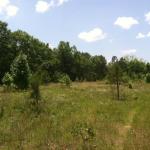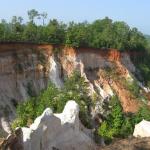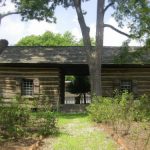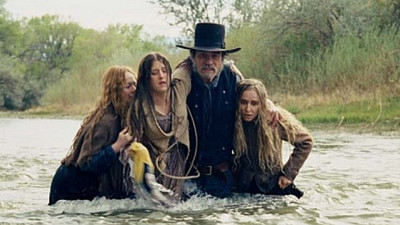Unless you’ve been there, as I have, and seen all of its natural and historic beauty, Lumpkin, Georgia is not a place many would think to shoot a movie, but in the case of Tommy Lee Jones’ “The Homesman”, Lumpkin was perfection.
While many films like “We Were Soldiers”, “The General’s Daughter” and “The Green Berets, as well as documentaries and television shows such as “M*A*S*H” and “The Walking Dead”, have taken advantage of Ft. Benning in nearby Columbus, Georgia, and even next door neighbor Omaha, Georgia with “The Long Riders”, Lumpkin has remained somewhat of a foreign land to filmmakers.
Just prior to World War I, Fox Studios saw the potential for moviemaking in Lumpkin County and its community of Dahlonega. With the benefit of what is now the Chattahoochee National Forest, the pristine waters of the Hannahatchee Creek and Chattahoochee River, and the old brick buildings that came to prominence in the 1830’s, Fox felt the region had “an old west” look to it. Unfortunately, after making just three films, among them, “The Plunderer”, Fox packed up its trucks and talent and left Lumpkin County. “The Plunderer”, the most well known of the three films to be shot by Fox in the region, celebrated the early gold mining hopes in Georgia and Lumpkin itself and was the fictional tale of a mine called “The Cross of Gold” and its owner. In 2005, Hollywood again returned to Lumpkin, this time to historic Westville, for the filming of Tim Sullivan’s horror comedy, “2001 Maniacs”, starring Robert Englund. But beyond that, but for a local short film or two, Lumpkin has remained virtually untouched by Hollywood.
But “The Homesman” may change all that for the quiet little county and its historic towns, especially Westville.
A film whose cinematography is a breathtaking story unto itself, Jones and cinematographer Rodrigo Prieto, were challenged to find the right shooting locations. As Jones told me, “It’s a journey eastward, and the destination looked a lot different than the origin.” Starting a journey in what is supposed to be the 1850’s plains of Nebraska and heading east to Iowa called for specific topography. “I got really tired of trying to figure out how we were going to make Galisteo, New Mexico look like bosky woods. We thought of everything and all manner of computer-generated imaging and phony trees and it just didn’t work.” Galisteo worked fine for Nebraska as Jones and Prieto used the vast open horizon as the eyeline with wide angle panoramic lensing creating not only a beautiful visual palette but metaphorically emotional one. But as the physical and emotional stories journeyed ever eastward, lensing became incrementally tighter with a need for the leafy green life force of those bosky woods. As Jones tells it, “We were very lucky to find Lumpkin, Georgia, where some man with a considerable amount of discretionary income tried to buy every 19th century house in Georgia and Alabama, and he brought it and made it a little town and it was perfectly suited to our purposes.” That little town is Historic Westville.
Located at the southern end of Lumpkin, Westville is an 1850’s living history museum village comprised of approximately 30 authentically restored and furnished antebellum buildings, including a court house, a church, town square, residences and schools, and sits on 82 acres of land that includes not only the village, but fields and pastures, a tributary of the Hannahatchee Creek and those “bosky woods” so necessary to Tommy Lee Jones and his mandate for authenticity in “The Homesman.” “We were very, very lucky to find that facility. Because of the contrast between Nebraska and Iowa, we wanted the end of the journey to look and feel a lot different than the beginning. . . .Lumpkin. It’s a beautiful place.”


















